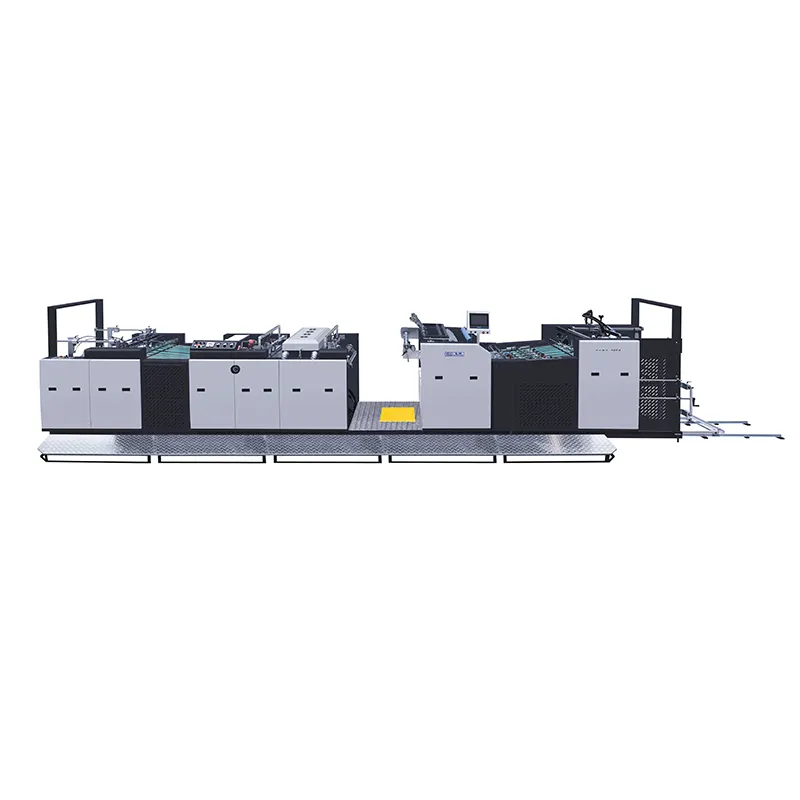What do you need for a lamination machine?
2024-05-22
Setting up and using a lamination machine requires several key items and steps to ensure proper operation and successful lamination of documents or materials. Here’s a list of what you need and a brief guide on how to use a lamination machine:

Essential Items for a Lamination Machine
1. Lamination Machine:
- Types: There are two main types: pouch laminators and roll laminators. Choose one based on your volume and type of lamination work.
- Pouch Laminators: Suitable for smaller tasks and individual document lamination.
- Roll Laminators: Ideal for larger, continuous lamination tasks.
2. Laminating Pouches or Rolls:
- Pouches: Used with pouch laminators. They come in various sizes and thicknesses (measured in mils, with higher numbers indicating thicker pouches).
- Rolls: Used with roll laminators. Available in different widths, lengths, and thicknesses.
3. Trimmer or Scissors:
- Used to trim the laminated documents to the desired size after lamination.
4. Carrier Sheets (if required):
- Some pouch laminators require carrier sheets to protect the machine from adhesive leakage. Check your machine's instructions.
5. Cleaning Supplies:
- Cleaning cloths and potentially a cleaning kit recommended by the manufacturer to keep the machine in good working order.
Steps to Use a Lamination Machine
1. Preparation:
- Warm-Up: Plug in and turn on the lamination machine. Allow it to warm up to the required temperature, usually indicated by a ready light. The warm-up time can vary between machines.
- Selection of Pouches/Rolls: Choose the appropriate laminating pouch or roll for your document. Ensure the size and thickness are suitable for the machine and the document.
2. Loading the Document:
- Insert Document: Place the document inside the laminating pouch, leaving an even border around the edges for a proper seal. For roll laminators, position the document between the layers of the laminating film.
- Use Carrier Sheet: If your machine requires a carrier sheet, place the pouch with the document inside the carrier sheet.
3. Lamination Process:
- Feed the Pouch/Roll: Insert the sealed end of the pouch or the edge of the document/film into the machine's feed slot. Ensure it feeds straight to avoid jams.
- Monitor the Process: Watch as the machine pulls the pouch/film through the laminating rollers. The heat and pressure will seal the document inside the laminate.
4. Finishing:
- Cooling: Allow the laminated document to cool for a few seconds to let the adhesive set.
- Trimming: Use a trimmer or scissors to cut away any excess laminate, leaving a small border around the document to maintain the seal.
5. Maintenance:
- Regular Cleaning: Periodically clean the rollers and other parts of the machine according to the manufacturer's instructions to prevent adhesive buildup and ensure smooth operation.
Additional Tips
- Choose the Right Temperature and Speed Settings: Refer to the manufacturer’s guidelines for setting the appropriate temperature and speed based on the thickness of the laminating pouch or film.
- Avoid Overloading: Do not feed multiple pouches simultaneously unless the machine is designed to handle such loads.
- Check for Jams: Be vigilant for any signs of jamming or misfeeds, and follow the machine’s instructions for clearing jams safely.
By ensuring you have the right materials and following these steps, you can effectively use a lamination machine to protect and preserve your documents.


